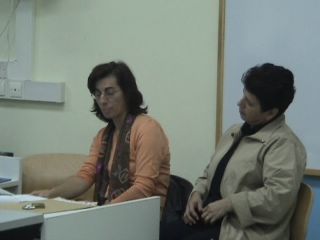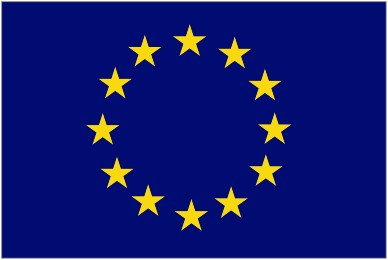General
1. Water in our planet
Water is not enough although the Earth could be seen as “The Blue Planet” from far away due to the great quantity of water which covers it.
But if an observer came closer to the Earth he would be surprised to see that some areas are flooded and some others face the problem of water shortage.
From 130 km3 of water resources of our planet:
43 km3 go to America (South and Central)
36 km3 go to Asia
22 km3 go to North America
21 km3 go to Africa
6 km3 go to Europe
1 km3 go to Australia
The quantity of water is not the same in the areas of each continent.
International ecological Organizations warn that by 2005 one in three inhabitants of the Earth (about 3,75 billion people) will be facing a serious problem of water shortage.
The problem of water shortage becomes more serious if we realize that 97% of water resources (sea water + fresh water) only 1% is available to man.
The increase in population, the improvement of the way of living, urbanization, industrialization and the increase of the irrigated areas have greatly water consumption, therefore new rules and law should be passed which will help the management of water as it is a natural resource which belongs to all of us.
2. Water in Greece
Greece is rich in fresh water since the average rainfall comes to 700 mm a year the is 115 billion m3. Half of this quantity is lost because of evaporation while the rest goes to the sea through rivers and to underground water.
87% of the water in Greece is used in agriculture and 10% is used for domestic purposes.
The problem in Greece is that the rainfall is not the same in every part of the country. In Western Greece rainfall is 900 mm, while in Athens and Naxos is under 400 mm. Some islands of the Aegean Sea and districts of Crete are in danger of being real deserts.
3. Municipal Company for Water Supply and Drainage of Ioannina (D.E.Y.A.I.)
Foundation and Aims
The Company was founded in 1980 by the local council in order to manage water supply and drainage. In the beginning it was a municipal service. Since 1985 it has been independent service and has got its own necessary equipment and facilities.
- The Company has a beneficial character.
- aims to deal with water supply and drainage of the town and other areas with constructions supported by national, European and local financial sources.
- is also aims to manage water supply and drainage not for its own benefit, but only to be able to cover its expenses. It is obvious that the Company provides one the primary necessities and at the same time water is one of the public goods.
- It is run by a council of 11 members appointed by the local council.
Water supply Company for drinkable water
The first serious operations for the water supply of the town was made in the mid-30s from the area of Krya , 8 km away from the town at the floor of the mountain Mitsikeli (east of the town). This area is rich in water due to rainfall and underground water from the mountain.
The pumped water was conveyed by means of two water pipes to a big tank in the town.
The first water main was constructed in 1938. Today water supply comes from Krya, where there are 8 drillings. This water is clean and does not need to go to any process.
Natural water may contain a lot of small organisms, which can be part of the natural flora of water. Some of them can be found in water, because of natural phenomena (such as rain, landslide etc) and some others because of human activities such as factory, or domestic waste.
Since some of these organisms can be harmful to man, water is cleaned before being given to use. After water has been pumped it is cleaned with chlorination. Ultraviolet (UV) radiation is also used to guarantee the best quality of drinking water and protect the consumers from unpleasant situations.
The Company checks the quantity of water every day.
Since 1992 the Company has got its own labs equipped with well-qualified staff, who check the quality of water not only at the pumping place at Krya, but also in the tanks and the mains.
The Company operates according to the recent Greek and European instructions. For that reason it has developed its labs and has equipped them with new technology instruments.
Cleaning drinking water
Water cleaning (decontamination) is the process through which organisms in water are destroyed so that diseases can be avoided.
The means which are used are:
- chloride
- ozone
- ultraviolet radiation (UV)
- filters
The most common process is chlorination and a little chloride is always used to protect water in the mains. Chloride is a chemical substance, which is drunk by billions of people all over the world so that many health problems can be avoided in case of harmful organisms in water. Scientists claim that chloride can cause problems to man especially in overdoses. Despite the fact that it can be harmful to our health, the danger of being ill because of the organisms in water is greater than the side effects of the chloride.
The Company tries to limit the amount of chloride and also uses UV radiation. For the best protection of water from pollution the zone around the place if water resource should also be protected and the activities in the area should be checked.
In addition the water mains and pipes should be kept in an excellent condition.
4. The Company and the protection of the environment. The draining system-Biological cleaning.
The construction of the draining system in the town of Ioannina started in 1971. It started working in 1990, when the biological cleaning was put in operation. Before the biological cleaning was started the draining system was the following:
The town had one draining system with drain tanks. In this way the domestic waste flowed into the lake which was the lowest part of the town. The same thing happened around the waste receiver was the ditch of Lapsista.
Since the construction of the draining system and the biological cleaning the ditch and the lake have not been the receiver of the waste any more.
Today 80% of the houses of the town are connected to the draining system and the next stage is the connection of the rest parts of the town.
The biological cleaning place is located between Krya, Perama and Aghios Ioannis.
Since 1992 waste has gone through biological process and it flows into the river Kalamas.
Biological Cleaning
The main stages are:
- Waste enters a central drainind system
- Sieving (waste goes through sieves where the solid materials are kept).
- The sand settles down and it is removed with special equipment.
- Tanks where the solid materials (mud) settle down and then the liquid waste goes to the next tanks.
- Ventilation tanks (biological reactor). In these tanks Phosphorus and Nitrogen are removed by the help of Oxygen and organisms which can be found in the mud.
- Then waste flow in the tanks for settling down.
- The clean waste go to the exit after being filtered and cleaned with chloride.
This lecture was delivered by Mrs. Eustathia Papachristou, chemist in the Water supplies Management Company of Ioannina (D.E.Y.A.I.)- Greece in the project meeting there, October 2004.
English Translation by Mrs. Maria Tsougla, English teacher in the 8th Unified Lyceum of Ioannina- Greece.



















<< Home